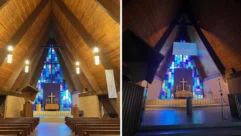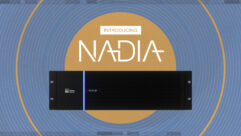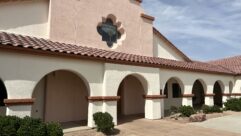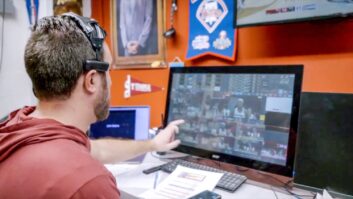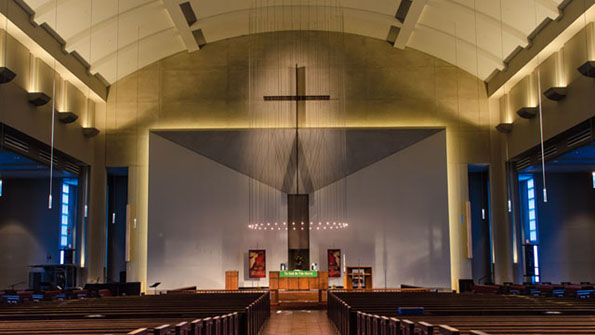
With its new steerable Meyer Sound CAL™ column array loudspeakers, Trinity Lutheran Church in Spring, Tex. has discovered a whole new level of speech and music clarity never heard before in its highly reverberant 1,400-seat sanctuary.
“The clarity with CAL is immaculate,” says Patrick Blake, director of worship arts at the church. “The tonality and musicality of the band are delivered to the entire congregation. Our band had evolved over the years from acoustic to electric with a full drum kit, and it was a constant struggle to hear. It’s night and day with CAL. An elderly congregant told me that he could turn off his hearing aid because he didn’t need it in here anymore.”
Originally designed for unamplified organ and choral music, the sanctuary features curved ceiling and marble floors that contribute to an RT60 upwards of 3.3 seconds, while its hard surfaces add to undesired echoes. With CAL, the church is able to control system coverage by directing audio energy only to congregants.
Blending harmoniously with the architecture, two CAL 96 loudspeakers comprise the main front system in a split-beam configuration. Two CAL 32 loudspeakers are steered with a 10-degree down tilt for rear delay, while an additional CAL 32 loudspeaker provides choir loft delay. Two X-800C subwoofers extend low-frequency coverage for music programs. A Galileo® loudspeaker management system with one Galileo 616 processor provides system drive and processing. The system, along with a new Soundcraft Vi3000 digital mixing console, was supplied and installed by Houston-based Covenant Communications.
“The old system didn’t have the control and the precise coverage needed for this difficult room, and the church couldn’t get the broadband SPL they wanted for their contemporary services,” says Bill Schuermann of Houston-based SLR Consulting, the system designer. “They wanted 96 dB-A, and now we’re doing that easily with the CAL.”
Offering unprecedented sonic accuracy and control, CAL’s performance is a result of a number of digital advancements and engineering details. They include its number of high-frequency and low-frequency drivers and the minimal spacing between each element, the optimized bi-amped configuration with very carefully selected crossover, as well as the dedicated DSP processing and amplification for each driver element. CAL is also the industry’s first AVnu-certified AVB loudspeaker.


